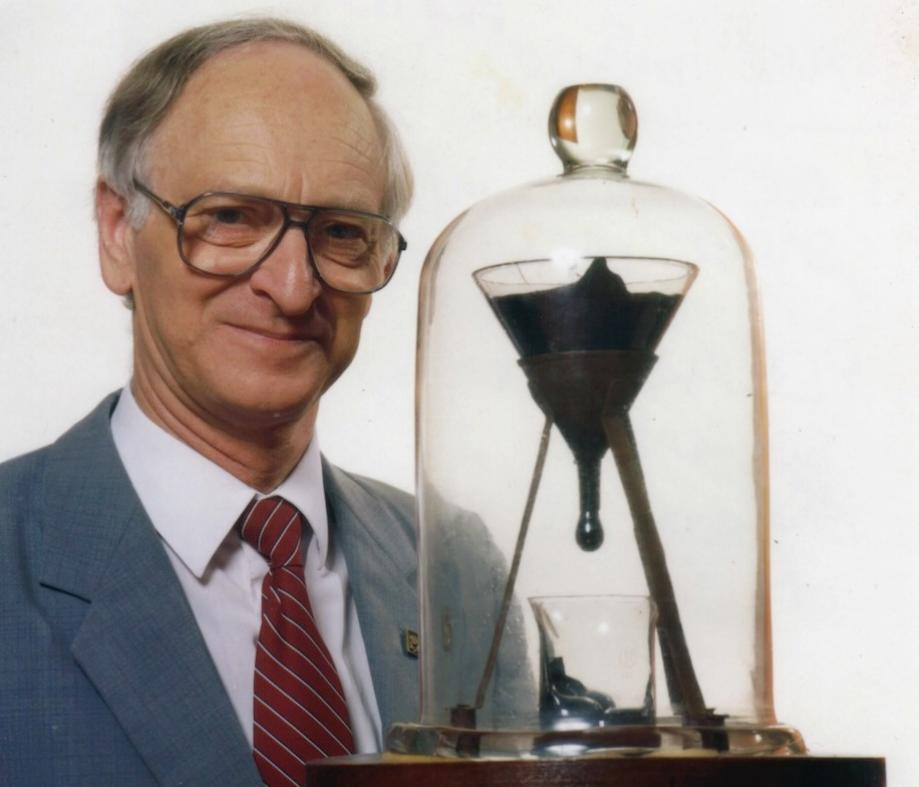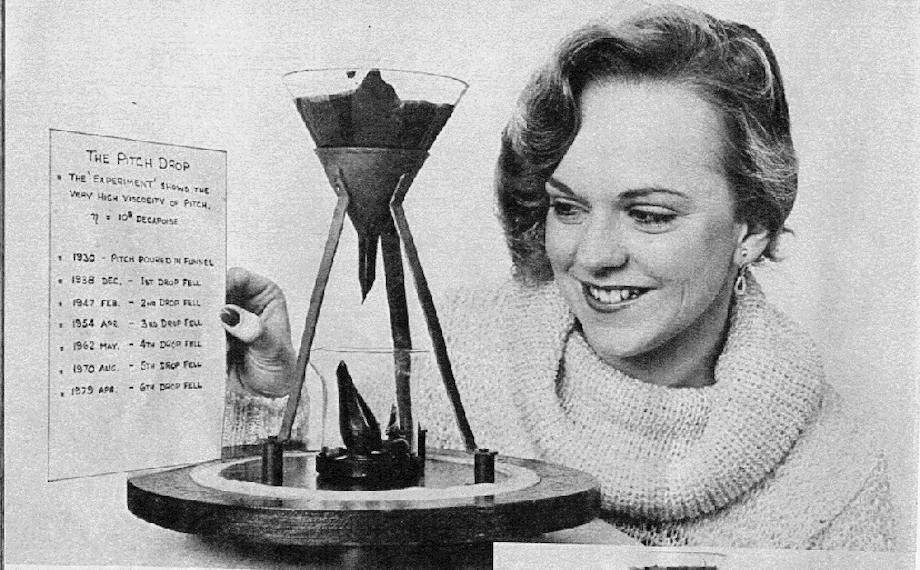Longest Running Laboratory Experiment Keeps on Going, Ever So Slowly
Atlas Obscura on Slate is a new travel blog. Like us on Facebook, Tumblr, or follow us on Twitter @atlasobscura.
To view the experiment that the University of Queensland's School of Maths and Physics boasts is "more exciting than watching grass grow," you'll need to go to the display cabinet at the school's foyer. There, beneath a glass dome, you will see a funnel filled with asphalt. It doesn't seem to be doing anything other than sitting there, but do not be deceived: You are looking at the world's longest continuously running lab experiment in action. (Other older experiments have all had brief interruptions. See links below.)
The Pitch Drop Experiment began in 1927, the brainchild of UQ physics professor Thomas Parnell. His aim: to demonstrate that pitch—a term that includes substances such as asphalt—is not solid, but a highly viscous liquid.
To prove this, Parnell poured a heated sample of pitch into a closed funnel and let it settle, a process that took three years. In 1930, he cut off the end of the funnel, allowing the pitch to flow freely. Which it did. Very, very slowly. The first drop fell into the beaker in 1938, with the second and third drops following in 1947 and 1954. With the installation of air-conditioning in the building came a reduction in the flow rate—the eighth drop, which hit the beaker in November 2000, took 12 years and four months to fall.
Parnell died in 1948, but his experiment has since been passed onto other custodians from the university. He never saw a drop fall, but neither has anyone else—the asphalt has an exasperating tendency to drip when no one is looking. A live-streaming webcam trained on the experiment during the 2000 drop malfunctioned. The next pitch drop is expected to fall sometime during 2013.
More on the Pitch Drop Experiment can be seen on Atlas Obscura. Recently WNYC's Radiolab did a piece on the Pitch Drop Experiment with Atlas Obscura co-founder Joshua Foer.


